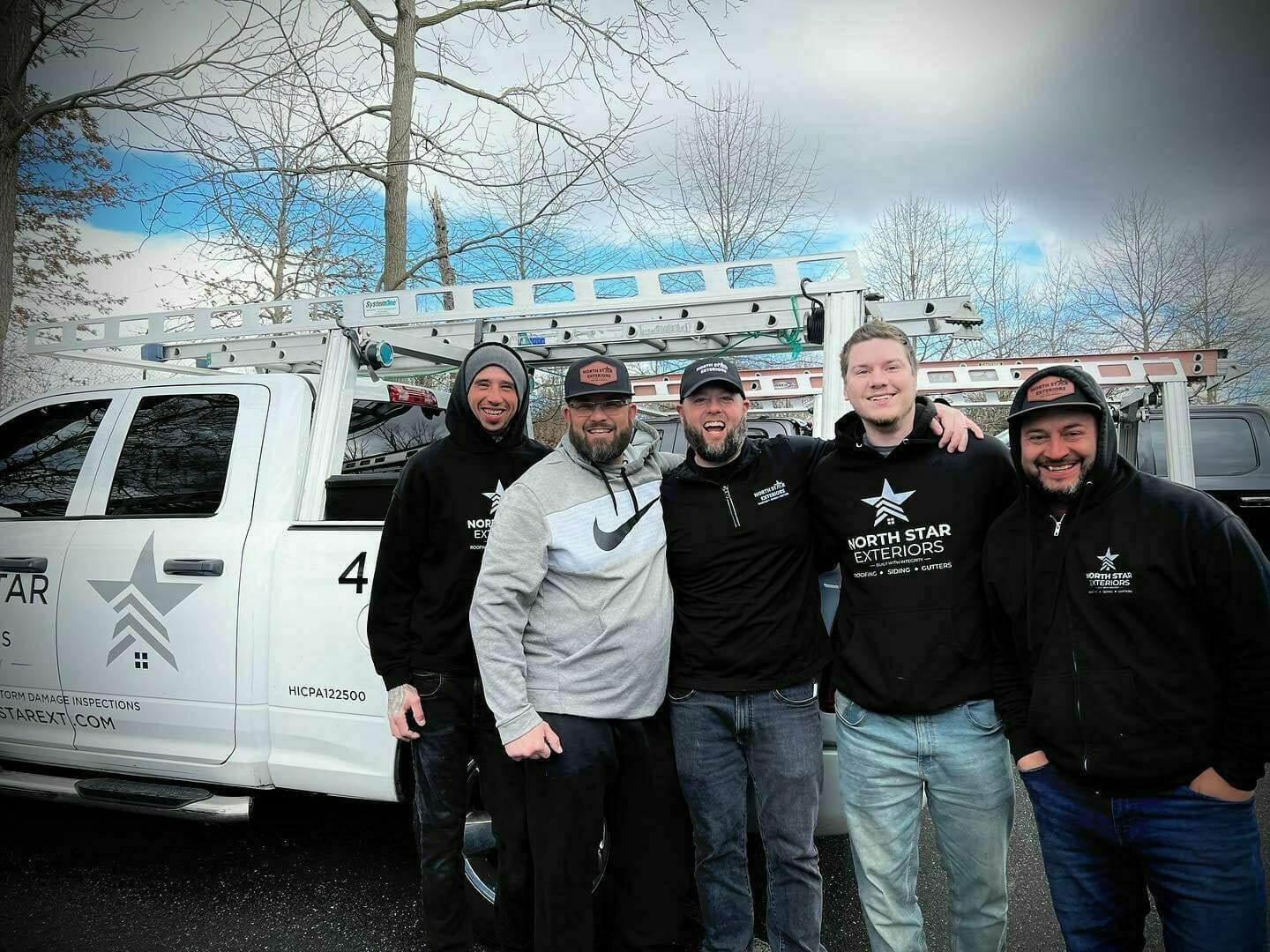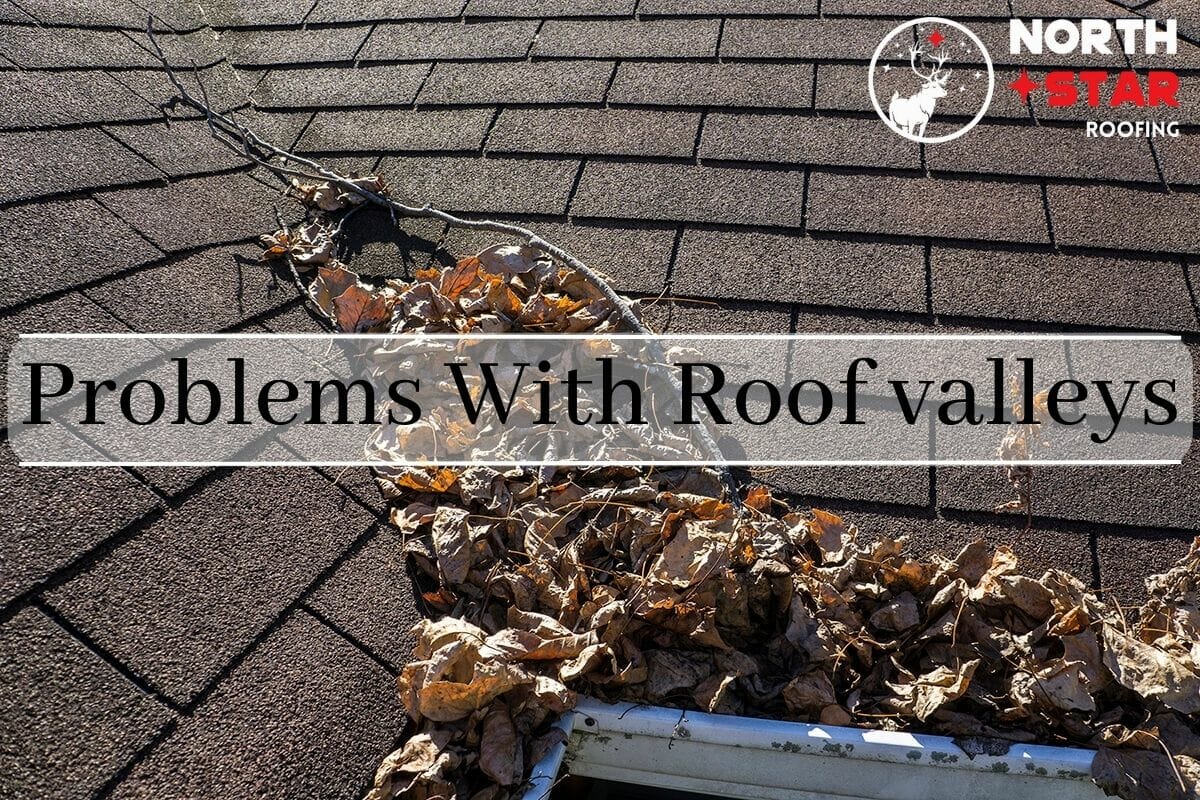The roof valleys play a crucial role in directing rainwater and debris away from your home. However, roof valleys are among the most vulnerable parts of a roof. From water damage to improper installation, there are several issues that can arise over time. It’s vital to identify and solve these problems permanently and in a timely manner.
At North Star Roofing, we’re here to help you. This guide covers the most common roof valley problems, how to identify them, and what you can do to fix them. If you’re a homeowner looking for expert insights, you’ll get valuable information and actionable steps to take.
So, let’s get started!
How To Find & Fix Common Roof Valley Problems
It’s always best to take precautionary steps and prevent severe damage rather than fixing it later on, and this holds true for your roof valleys. Identifying and fixing problems early on can save you a lot of trouble and money down the road.
Problem #1: Water Damage
One of the most common issues with old and worn-out roof valleys is water damage. As water flows down your roof, the roof valleys help direct the water toward your gutter system and help it drain away. However, if your roof valleys were constructed years ago, their old age may lead the water to seep through the valley material and damage your home’s interior.
Here are some common signs of water damage:
- Visible leaks or dripping water
- A musty or moldy smell, especially in the attic or upper rooms of the home
- Peeling paint or wallpaper
- Brown or yellow stains on the ceiling, especially around the corners
Fixing Water Damage
To repair water damage, you will need to hire a reliable roofing contractor who can inspect the whole roof, attic, siding, and gutters for water damage. They’ll explain the extent of the damage and suggest the right roofing material required to complete the repairs.
The work includes removing damaged shingles, flashing, wood, and any other damaged portion of the roof and installing fresh, better-quality material. The flashing is then sealed properly using roofing cement or other sealants.
Though this is one of the most common problems with roof valleys, apart from this, you may also find a lot of leaves or debris stuck in the valleys, which also creates problems when it rains and may lead to water damage.
Problem #2: Water & Debris Buildup
Besides water, there are leaves, twigs, branches, shingle granules, dirt, and lots of other debris that collect in the roof valleys, especially closed or dead valleys. This blocks the flow of water and causes damage over time.
This is where most of the debris accumulates:
Dead roof valleys: A dead roof valley is a roof valley that does not have any outlets to direct water to the gutters or downspouts. Instead, water collects in the valley, which can lead to leaks and water damage. Dead valleys are often found on roofs with complex designs or in areas, where two roofs meet at an angle.
Valleys at gable intersections: Valleys at gable intersections are a type of dead valley that emerges when two gable roofs meet at an angle leaving water to collect. These sections are prone to deteriorate quickly and develop leaks.
To prevent such problems with roof valleys, it’s crucial to ensure that water has a clear path to flow off the roof and into the gutters and downspouts.
How To Fix It
You can’t simply solve this issue by cleaning the area every day. This is mostly an installation problem, and you can fix it by changing the design or installing additional water-diverting components around these areas.
A. Install A Diverter
A diverter is a metal or vinyl strip that is installed in the valley to direct water to the gutters or downspouts. Diverter installation is a relatively simple and cost-effective solution that can prevent water damage and leaks.
B. Install A Cricket Or Saddle
A cricket or saddle is a small roof structure that is installed on the high side of the roof to divert water away from the valley. Crickets and saddles are often used in areas where two roof slopes meet at an angle, to prevent water from pooling in the valley.
C. Reconfigure The Roof Design
In some cases, it may be necessary to reconfigure the roof design to eliminate dead valleys and rebuild the poorly constructed ones. This is the only permanent solution for such installation faults.
Finally, damaged roofing material is also among the most common roof valley problems, and it can occur in both new and old roof valleys alike.
Problem #3: Damaged Roof Valley Material
There are two types of roof valleys, closed and open. Closed valleys are simply covered by shingles or whatever roofing material you’ve chosen, while open valleys have a secure path for water runoff, which is created by using metal flashing. While valley flashing is a more sturdy option, it can also become damaged due to stormy weather.
Identifying Damaged Valley Flashing
- Check for cracks or splits in the metal flashing strip
- Look for rust or corrosion which is marked by discoloration
- Look for missing or rusty fasteners.
A closed valley is more prone to damage as the shingles don’t form a direct pathway for rainwater runoff.
Identifying Damaged Valley Shingles
- Look for cracked, curled, or warped shingles
- Check for missing shingles or gaps in the shingle coverage
- Check for granule loss, which can weaken the shingles
Repairing The Damaged Valleys
If the flashing is highly damaged or completely destroyed due to a storm or wear and tear, you will need a roof valley replacement service. This will involve replacing the adjacent shingles, installing new metal flashing, and replacing any damaged parts below the flashing.
You must choose a permanent solution to these roof valley problems. Otherwise, they can later become more severe, and dangerous, and may need costly repairs. So it’s better to take proper action and fix these problems in a timely manner.
If you live in Lansdale, North Wales, or surrounding areas in Pennsylvania, we can help you find and fix these issues using our time-tested, robust solutions.
We Offer Free Roof Inspections & Estimates To All Homeowners
At North Star Roofing, we understand the stress and anxiety that can come with a roofing problem, which is why we are committed to helping our community. We offer free roof inspections and estimates to help homeowners get the assistance they need. We can provide you with a clear understanding of the extent of damage, suggest the most suitable solutions, and provide an estimated cost to repair your roof valleys.
Our skilled and honest team has the knowledge and expertise to handle any roofing issue, from roof valley repairs to complete roof replacements. If you need our advice or roofing services, call us at (484)-302-7663 to schedule a free consultation.


